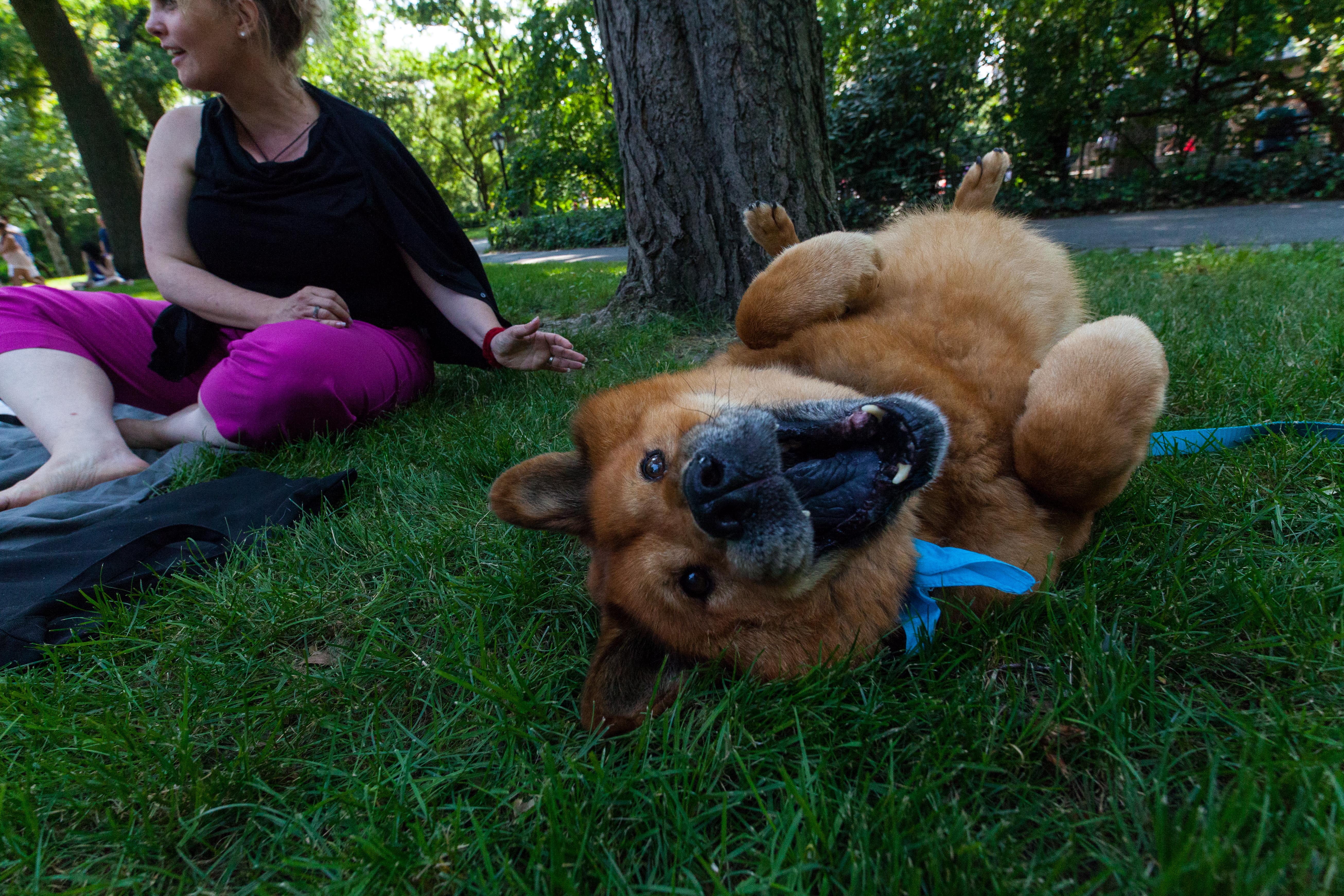
10 Mar Socialization: The Positive, Healthy Way We Love
Socialization supports health and communication, but socializing a dog is more than just letting her meet and interact with other dogs. It’s about introducing her to the world, like you would any baby. Is she a puppy? An older pup? Is she a rescue with anxiety? Loud noises, steep stairs, strangers, overcrowding, even a new neighborhood could trigger a challenge for your pup. Every dog comes to her owner with a very special personality and past. When it comes to socializing, all these factors come into play.
We All Love Positivity
Have you ever heard the story of learning how to swim? The idea is that you can only learn by jumping right in. That’s not true, and honestly can be pretty traumatizing (although some people get lucky.) Socializing your dog needs to be systematic and positive – just jumping in isn’t the best plan. A first impression can last a life time, and we want it to be a good one. With puppies, we get to start with mostly neutral associations. Your pup hasn’t seen a bus before, so he has no idea he might be scared of how noisy it is.
Catching up with an older dog can be more difficult, as she’s already had the chance to form negative associations. For example, a pup who always has her ears and tail pulled by the neighbor’s toddler is unlikely to have a neutral, much less positive, emotional response to seeing another toddler. She’s been primed to expect something painful and uncomfortable to happen, so successful socialization has to first neutralize the negative before we can build the positive.
How do we create positive emotional responses? We want to pair the new, scary, or odd stimuli with something fantastic. A new person means I get a bit of chicken. A new/scary thing appears, then a great thing happens. Scary thing means amazing thing. On a walk with a brand new puppy, this might mean that every time a noisy vehicle goes by a bit of meat (don’t skimp on these treats!) appears at your puppy’s nose. No words necessary. Loud noise = tasty treat. On a walk with a dog who’s already nervous about other pups, and who reacts negatively to them, every time a dog appears a treat appears. Dog appearing means great treat appears. New or bad thing = amazing thing.
Identify The Goal, and Take Baby Steps
An important key to socialization is to know how your dog feels about new or potentially stressful situations. For example, if your puppy tends to charge into new situations headfirst, you’ll likely be able to challenge her sooner than if she were naturally more cautious. If your dog is defensive with other dogs throwing her in the dog run isn’t going to help her, even with high value reinforcement (think real meat treats). Without the proper steps and building blocks, we risk causing more negative than positive associations, slowing down our progress. It’s about comfortable integration, teamed with the reinforcement and encouragement. Start from a safe place, and work toward introducing (or reintroducing) your pup to the new or scary stuff at her own pace. Work these safe outings into your walking routine.
Does your dog cower when a loud truck goes by? Choose the streets with less traffic until you can build up to the more chaotic areas. Does she show anxiety in large crowds? Avoid heavily populated areas and instead enjoy the company of a few people, slowly building to the more populated situations.
Watch Your Dog’s Progress
Watch your dog’s body language and look for signs of stress. Pay attention to whether she’s able to listen to you – stressed pups are unlikely to respond to a sit or touch cue, even if they know those cues. Watch for signs of anxiety, such as lip licking, picking up a paw, or trying to avoid a situation. Some pups put on a big show of bravado, and their anxiety looks like aggression – barking, lunging, growling. When you plan an outing to help with socialization, be prepared with a treat that makes you the most interesting thing she’ll encounter. You want to make sure you’re aware of her comfort level, and retreat from situations before she gets so nervous she reacts or becomes nervous or overly excited. As your dog becomes more comfortable with the situations at hand, you can slowly introduce her to newer and more complex situations.
[mk_image src=”https://www.puptopianyc.com/wp-content/uploads/2016/02/IMG_20150729_182006.jpg” image_width=”400″ image_height=”600″ crop=”true” lightbox=”false” frame_style=”simple” target=”_self” caption_location=”inside-image” align=”center” margin_bottom=”10″]
How Do You Gage Her Comfort?
When your dog is comfortable, she will perform tasks she knows by heart. Easy, quick, happy. Let’s say you’re on a busy street, and you ask her to sit at the crosswalk, like you always do. But this time, she isn’t paying attention, and when you finally get her attention, she sits cautiously and slowly – a task she usually does at the drop of a hat. This is the kind of clue you should be looking for. If she is really challenged, decrease the level of stimulation until she is more comfortable and able to pay attention to you. We’re essentially immunizing your pup to the world around her, so little bites of the new/scary stuff are better than giant gulps that risk overwhelming her.
It’s important that your dog has similar treatment during all her interactions with the world. If you have a dog walker NYC or a sitter, make sure he/she is comfortable and able to help correctly socialize your baby. Don’t be afraid to work with your walker, ask them questions, and make sure you can work together! If you need help, or advice, go ahead and contact our training services at info@puptopianyc.com!




No Comments